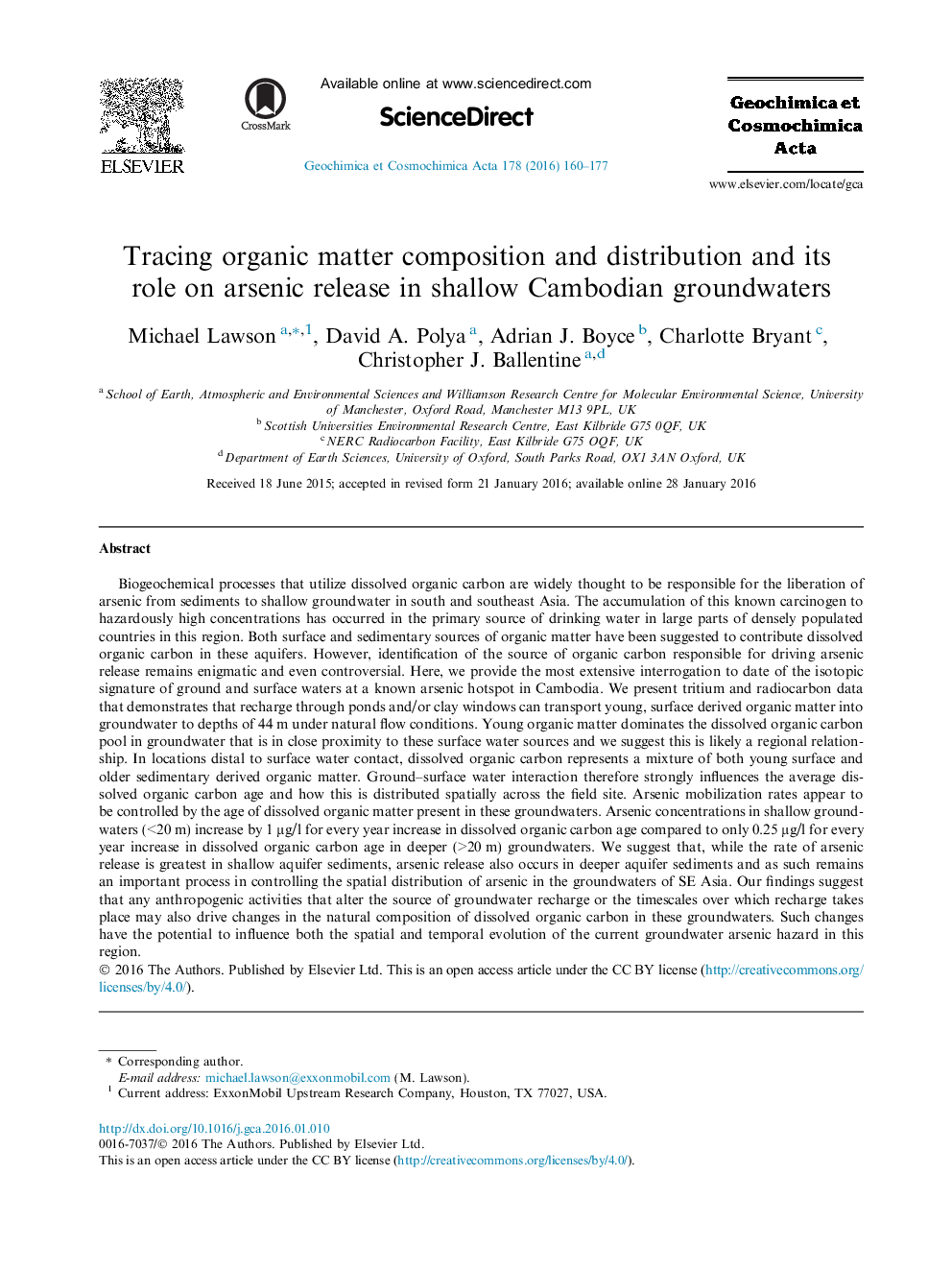| کد مقاله | کد نشریه | سال انتشار | مقاله انگلیسی | نسخه تمام متن |
|---|---|---|---|---|
| 6437524 | 1637979 | 2016 | 18 صفحه PDF | دانلود رایگان |
Biogeochemical processes that utilize dissolved organic carbon are widely thought to be responsible for the liberation of arsenic from sediments to shallow groundwater in south and southeast Asia. The accumulation of this known carcinogen to hazardously high concentrations has occurred in the primary source of drinking water in large parts of densely populated countries in this region. Both surface and sedimentary sources of organic matter have been suggested to contribute dissolved organic carbon in these aquifers. However, identification of the source of organic carbon responsible for driving arsenic release remains enigmatic and even controversial. Here, we provide the most extensive interrogation to date of the isotopic signature of ground and surface waters at a known arsenic hotspot in Cambodia. We present tritium and radiocarbon data that demonstrates that recharge through ponds and/or clay windows can transport young, surface derived organic matter into groundwater to depths of 44 m under natural flow conditions. Young organic matter dominates the dissolved organic carbon pool in groundwater that is in close proximity to these surface water sources and we suggest this is likely a regional relationship. In locations distal to surface water contact, dissolved organic carbon represents a mixture of both young surface and older sedimentary derived organic matter. Ground-surface water interaction therefore strongly influences the average dissolved organic carbon age and how this is distributed spatially across the field site. Arsenic mobilization rates appear to be controlled by the age of dissolved organic matter present in these groundwaters. Arsenic concentrations in shallow groundwaters (<20 m) increase by 1 μg/l for every year increase in dissolved organic carbon age compared to only 0.25 μg/l for every year increase in dissolved organic carbon age in deeper (>20 m) groundwaters. We suggest that, while the rate of arsenic release is greatest in shallow aquifer sediments, arsenic release also occurs in deeper aquifer sediments and as such remains an important process in controlling the spatial distribution of arsenic in the groundwaters of SE Asia. Our findings suggest that any anthropogenic activities that alter the source of groundwater recharge or the timescales over which recharge takes place may also drive changes in the natural composition of dissolved organic carbon in these groundwaters. Such changes have the potential to influence both the spatial and temporal evolution of the current groundwater arsenic hazard in this region.
Journal: Geochimica et Cosmochimica Acta - Volume 178, 1 April 2016, Pages 160-177
